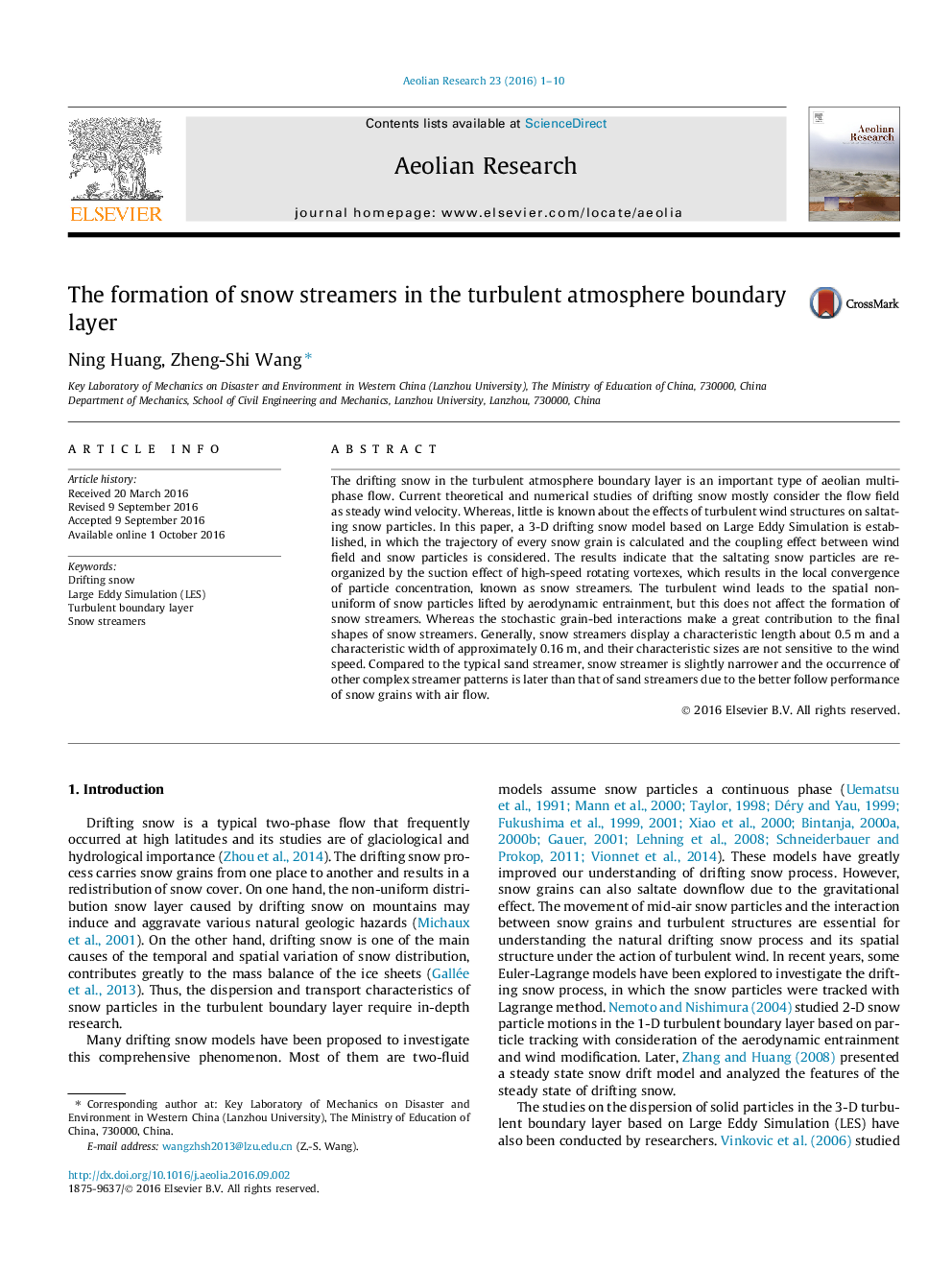| کد مقاله | کد نشریه | سال انتشار | مقاله انگلیسی | نسخه تمام متن |
|---|---|---|---|---|
| 6426210 | 1634105 | 2016 | 10 صفحه PDF | دانلود رایگان |
- Snow streamers are dominated by high-speed rotating vortexes.
- The characteristic length and width of snow streamers are 0.5Â m and 0.16Â m.
- The final shapes of snow streamers are related to the grain-bed interactions.
The drifting snow in the turbulent atmosphere boundary layer is an important type of aeolian multi-phase flow. Current theoretical and numerical studies of drifting snow mostly consider the flow field as steady wind velocity. Whereas, little is known about the effects of turbulent wind structures on saltating snow particles. In this paper, a 3-D drifting snow model based on Large Eddy Simulation is established, in which the trajectory of every snow grain is calculated and the coupling effect between wind field and snow particles is considered. The results indicate that the saltating snow particles are re-organized by the suction effect of high-speed rotating vortexes, which results in the local convergence of particle concentration, known as snow streamers. The turbulent wind leads to the spatial non-uniform of snow particles lifted by aerodynamic entrainment, but this does not affect the formation of snow streamers. Whereas the stochastic grain-bed interactions make a great contribution to the final shapes of snow streamers. Generally, snow streamers display a characteristic length about 0.5Â m and a characteristic width of approximately 0.16Â m, and their characteristic sizes are not sensitive to the wind speed. Compared to the typical sand streamer, snow streamer is slightly narrower and the occurrence of other complex streamer patterns is later than that of sand streamers due to the better follow performance of snow grains with air flow.
Journal: Aeolian Research - Volume 23, December 2016, Pages 1-10
